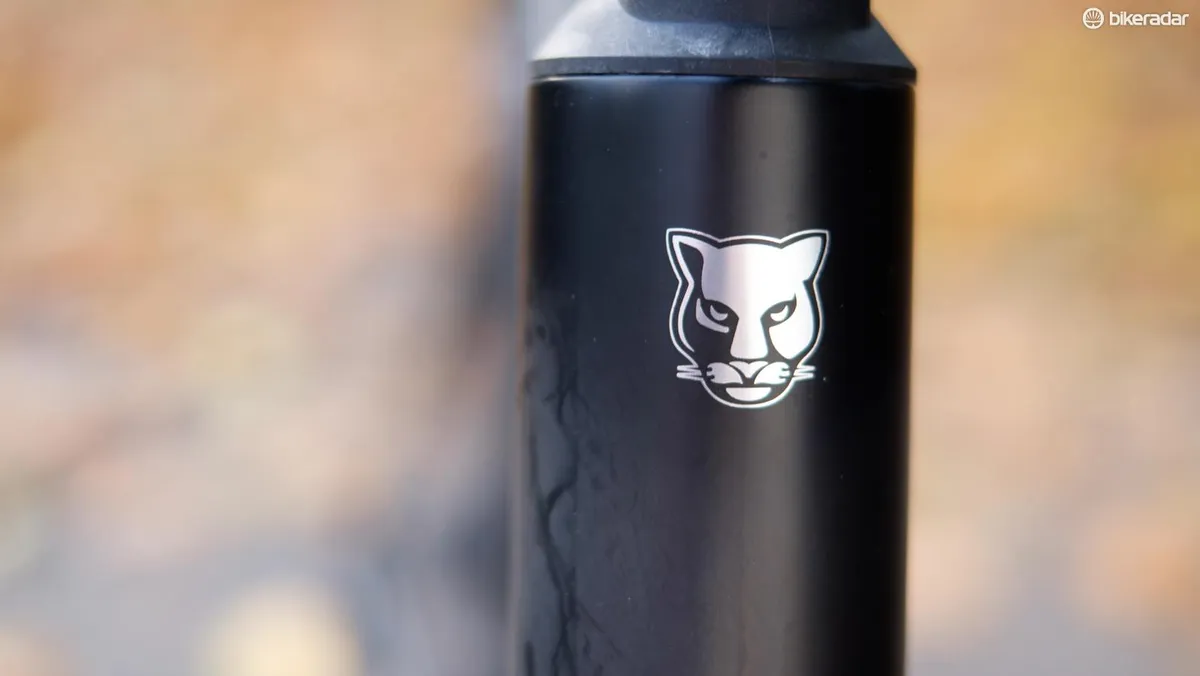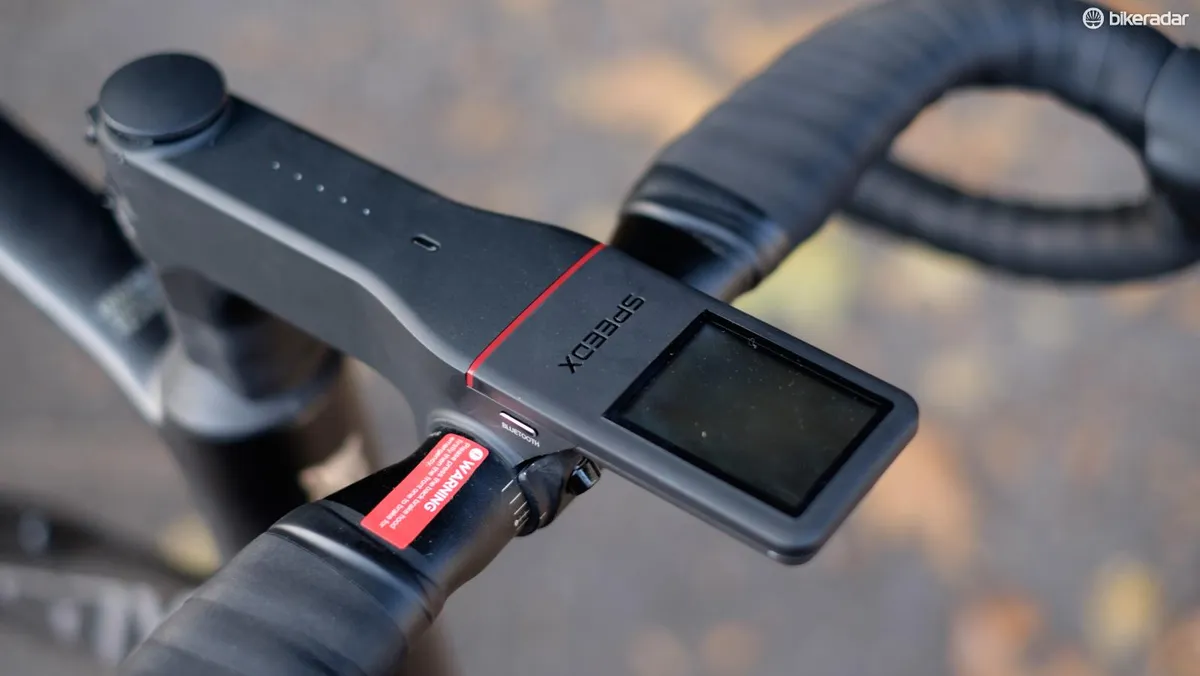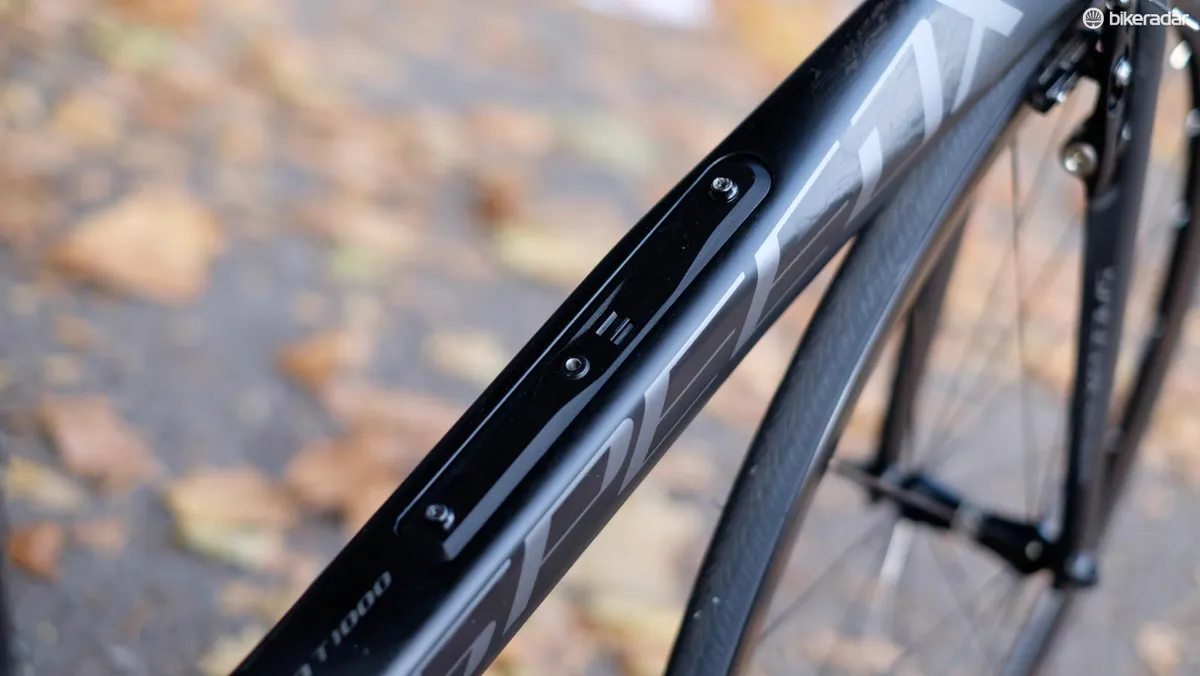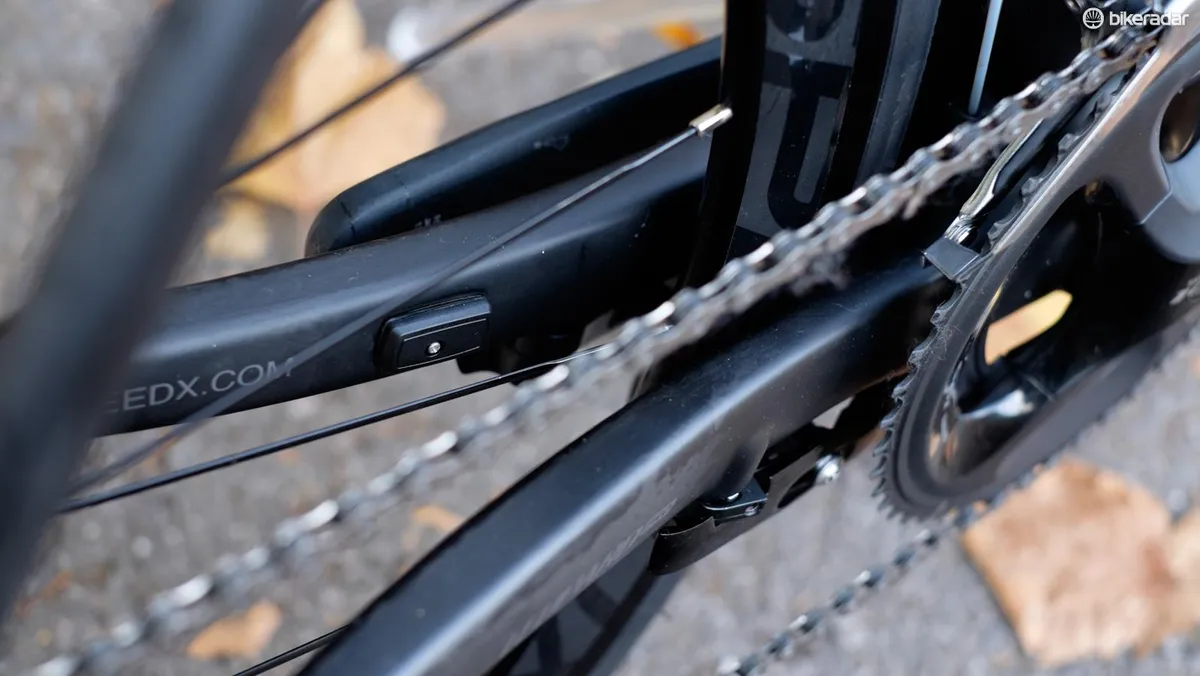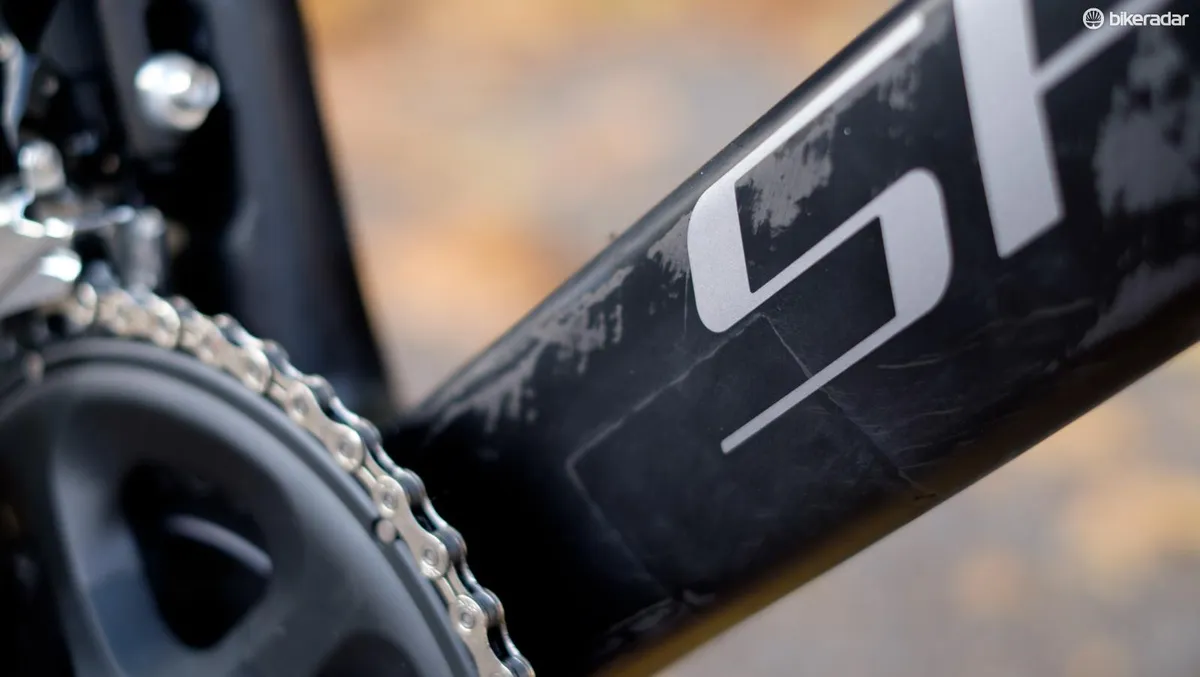Early adopters of new tech are either seen as pioneers or foolhardy. Sometimes the latest innovation in technology is groundbreaking — think original iPhone, Sony Walkman — but for every success there’s a Nintendo Virtual Boy or Microsoft’s iPod rival the Zune. So is the SpeedX Leopard the bike equivalent of the iPhone or is it the Nokia NGage (Google it)? Let’s see…
This article has been updated from a first-ride to a full review.
SpeedX Leopard: smart tech
The SpeedX Leopard is described on its Kickstarter page as “the first ever smart aero road bike” and set records for crowdfunding when more than 1,250 backers pledged $2,319,876 to bring the project to life. The campaign set a record for the most funded bike campaign on Kickstarter and made it into the crowdfunding website’s top fifty all-time campaigns.
Installing the app on iOS is simple, and enabling Bluetooth and connecting the two together the same, but no matter how hard we tried the computer and app simply wouldn’t sync
While there’s clearly a desire for a connected, smart bike and on paper the Leopard has plenty of smart stuff — built-in speed and cadence sensors, a motion activated rear light, integrated computer head unit in the stem — can it deliver the goods out on the road?
Alongside the integrated computer and sensors, the bike also comes with an app for both iOS and Android. The SpeedX app features the ability to see your riding history, connect to the bike, and even set up a club and be party to rankings globally on the usage of the bike.
In this world of Strava obsessions and the consumption of data this all sounds really, really promising but sadly the Leopard has some issues here.
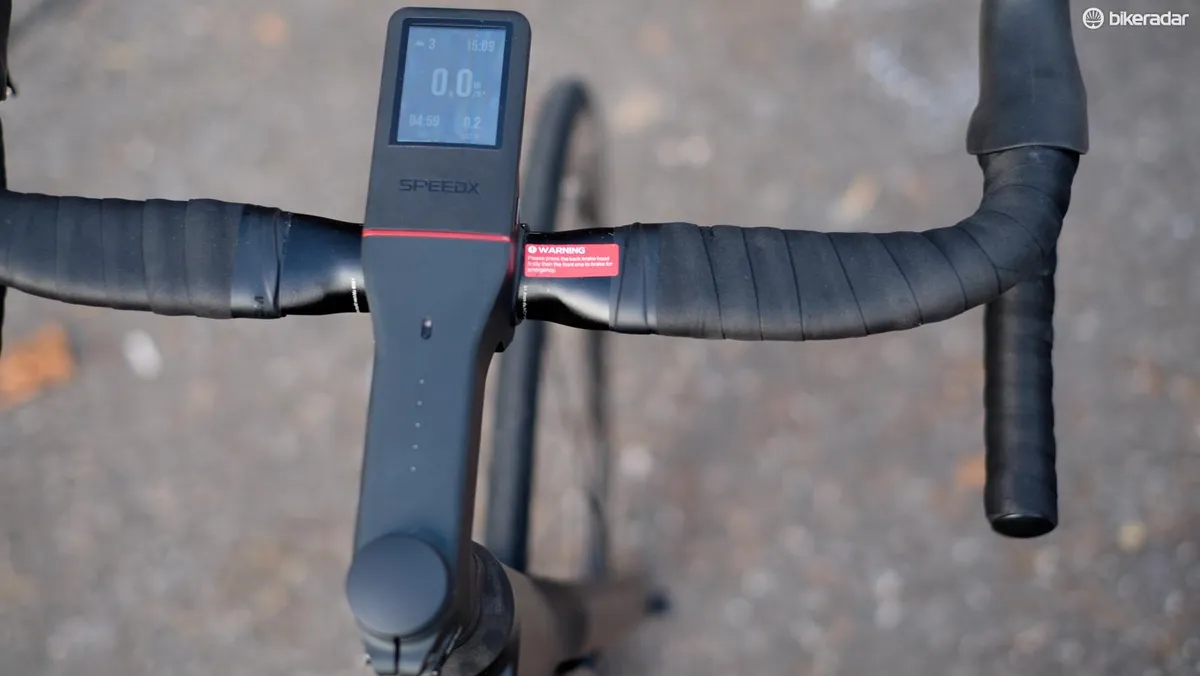
First up the integrated cadence sensor, which is designed to slot into the hex bolt hole in the back of the pedals. It’s a neat idea, but sadly this one is designed for the included flat pedals and for a 6mm hole, which makes it incompatible with Shimano, Look, Time, Speedplay (cromo) and Mavic — which all have an 8mm hole. So we had to resort to wrapping electrical tape around the crank end to get cadence to read. That we can forgive, but the inconsistency of the computer and app communication is less forgivable.
Installing the app on iOS is simple, and enabling Bluetooth and connecting the two together the same, but no matter how hard we tried the computer (bike) and app (phone) simply wouldn’t sync. Sometimes the app crashed completely, sometimes it just hung on the syncro percentage screen (though speaking to a colleague using Android they had much more success). So your ride history is stuck on the head unit and not on the more social aspects of SpeedX ownership.
You can however record rides direct from the app, in parallel with the bike (not mirroring) using the phone’s GPS. This was also patchy however, with GPS pick up from the app either not happening or taking an age, but even if it worked perfectly every time it sort of makes the bike’s connectivity redundant.
The bike also has ANT+ and built-in Bluetooth for connecting a Bluetooth heart rate monitor and ANT+ power (from another bike), which worked seamlessly. If Leopard can get everything running the same as this then in theory it’s a very promising system — especially with turn-by-turn navigation, statistics reports and a Strava-like global leaderboard to compare with other SpeedX owners. At the moment though it just feels and acts somewhat unfinished.
But how does the SpeedX Leopard ride?
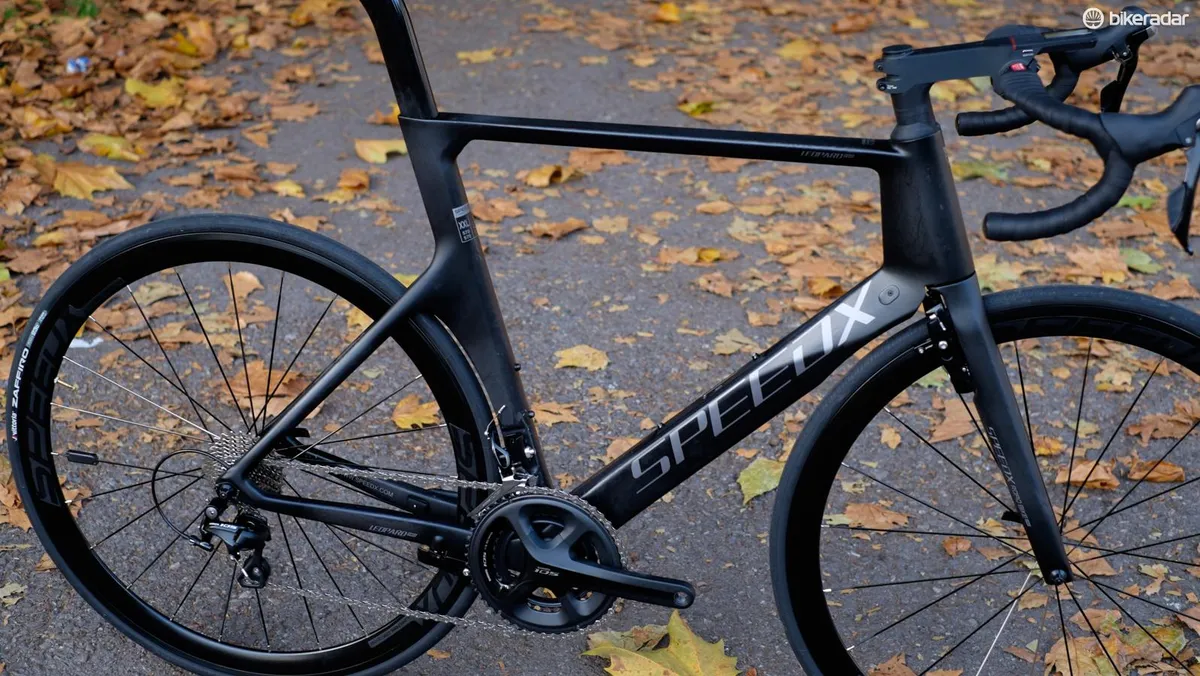
Smart tech is one thing, but the bike it’s applied to has to be worth your time too. The frame is undoubtedly designed for aero and built to be tough — Leopard has a video online of a Lamborghini suspended from the frame without it breaking — and it’s a combination of both T800 and T1000 fibres, both fine choices when it comes to strength to weight properties.
The dedicated aero post includes both an integrated motion-activated rear light and a micro-USB port for charging, but when I set the saddle height the USB port’s rubber cover fouled the seat clamp
The frame weighs in at a claimed 1,200g, which in aero terms was pretty good a few years back, but compared to the latest from Scott Foil (945g), Cervélo S5 (1kg), Trek Madone (950g), and Specialized Venge Vias (1.1kg), it’s carrying a small penalty.
The geometry is standard stuff for a bike aimed at the racier end; with our size XXL coming up as a 57cm (not really XXL by western standards) and a stack of 564mm and reach of 408mm. In comparison, an off-the-peg H2-fit Trek Madone has 601mm of stack and a 391mm reach. So it’s quite long and low, no bad thing in our book, though the stack is greater than stated thanks to the dedicated aero shaped headset spacer — adding 25mm and bringing it more in line with the Madone.
The long 1,008mm wheelbase makes it stable at speed, yet the 73-degree head angle, which we thought would have given a bit more snap to the steering (especially with a 45mm offset to the fork), doesn’t feel that way. As it stands the steering is more steady than sharp, again not at odds with the rest of the bike, just a little unexpected.

The dedicated aero post includes both an integrated motion-activated rear light and a micro-USB port for charging, but when I set the saddle height (79.3cm) the USB port’s rubber cover fouled the seat clamp, making it quite awkward when it came to plugging it in. The front facing wedge clamp did its job, until we rode it in the rain and the gap between the frame and post allowed water ingress, which in turn led to the post slipping. We tightened the bolt beyond what we felt comfortable and to be fair it hasn’t slipped since.
At the front end it’s solid and there is little in the way of vibrations, but every road scar is met with a thunk rather than a bounce
Climbing on the Leopard is a mixed bag. The stiffness encourages pedalling efforts, but the flex in the rims means that’s countered by a rhythmic brake rub at both ends. It also has weight against it, making it more ponderous than powerful. Good all-rounder gearing helps but it simply doesn’t feel anything like a match for similarly priced bikes.
After a week’s riding, the front end had developed a regular grinding squeak as soon as you applied pressure to the bars — say when sprinting or climbing out of the saddle — which was cured by adjusting the stem and spacers, but worryingly came back quickly too.
A stiff, harsh ride
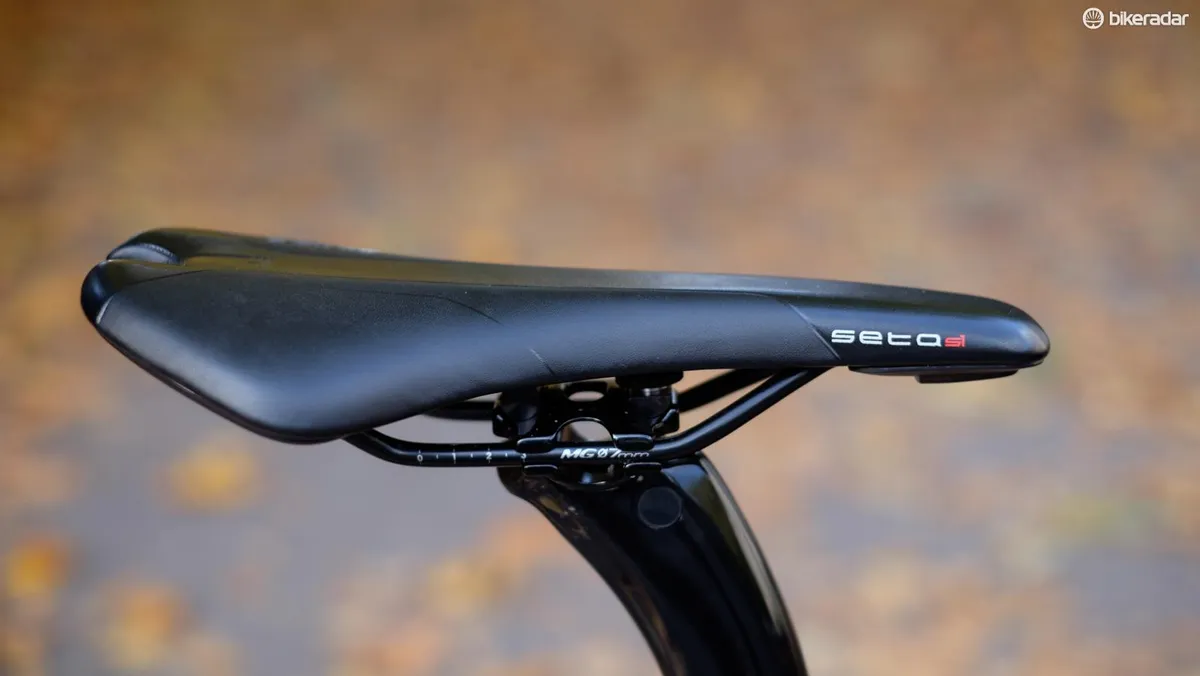
The stiffness through the bottom bracket is mighty impressive for an aero bike, well any bike for that matter. So yes maybe it’s tough and stiff, but it’s also uncompromisingly so. Running skinny 50mm deep alloy aero clincher wheels shod with narrow 23c tyres only adds to the overall feeling of harshness.
At the front end it’s solid and there is little in the way of vibrations, but every road scar is met with a thunk rather than a bounce. At the rear, the solidity of the frame puts a sting in its tail and it’s only thanks to the comfortable Selle Royal Seta saddle that we didn’t come away feeling more punished.
The overall mass does temper any potential gains from the aerodynamically styled frame and some of this has to be down to what are pretty poor wheels. They aren’t overly heavy at 1.45kg for the front, including tyre and skewer (but are heavier than bikes found on similarly priced bikes), and 2.1kg at the rear, including the same as the front as well as the cassette. Compared with a set of Mavic Aksium Ones, with 25c tyres and weighing 1.23kg/1.69kg, that’s a 630g penalty.
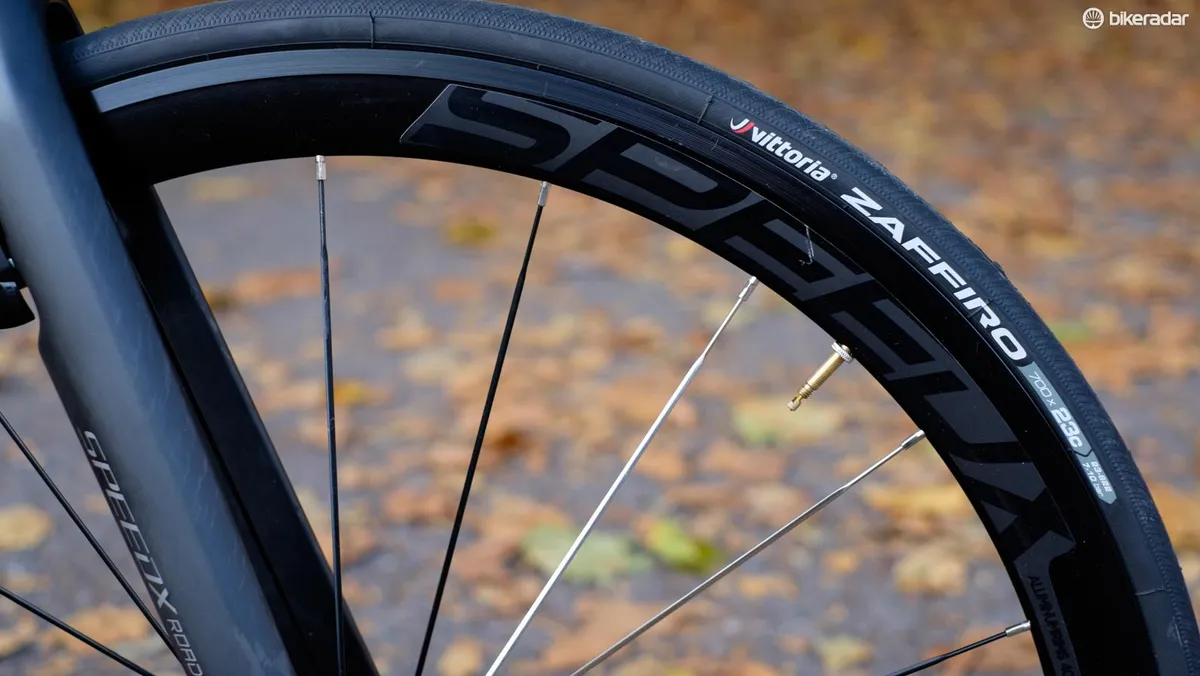
That could be acceptable if they rode fast, but despite the wheels having decent quality cartridge bearing-equipped Novatec hubs the rims themselves weren’t straight out of the box, leading to pulsing when braking thanks to a lumpy rim joint and the back wheel going out of true both vertically and laterally quite quickly — leading to brake rub issues from the under chainstay mounted TRP brake. The rims are deeply anodized black with a textured lined surface on the brake track.
Braking in the dry was acceptable though wooden through the initial input and suddenly grabbing after a few moments they reminded me of old-school carbon rims in wet weather. In the rain the brakes simply failed to slow the bike as quickly as we’d like, with the grooved brake track seemingly providing a space to trap water and only after a few revolutions clearing enough to allow the brakes to work.
Is there more to come from SpeedX and the Leopard?

Overall the SpeedX Leopard just comes across as a near miss, the smart tech is intriguing but on this bike is flawed. We’ve had plenty of updates to the app since riding the bike, but none have completely cured the issues at the time of publishing. More importantly the ride quality isn’t up to the best compared with equivalently priced bikes and the wheels leave plenty of room for improvement.
SpeedX obviously has the funding and we think it’ll iron out the tech bugs, but on the bike side of things the Leopard needs some serious refinement.
As it stands we couldn’t recommend the Leopard in this guise, it’s just too weighty and too compromised in its running gear. We are still looking forward to where SpeedX's Leopard project will go however; if it fulfils its potential and goals for both the tech and bike SpeedX will have a decent rival to established brands, especially if it can keep the direct to market pricing as competitive as it is right now.
If we had £1,300 burning a hole in our pocket and wanted to get plenty of data we’d opt for one of the great sub-£1,000 bikes around like Eastway’s Emitter R4, B’Twin’s Triban 540 or Boardman’s Team Carbon, and add in a Garmin Edge 1000 bundle. Then you’d have a dynamically better bike with a computer that’s proven to sync with everything — and comes complete with speed/cadence sensors and a HR strap for all your data needs.
SpeedX feedback
We’ve been in touch with SpeedX to feed back on some of our findings and give it the right to reply. Below you can read the response and find out what improvements SpeedX plans to make:
SpeedX are constantly reviewing and evaluating their bikes and have made a number of improvements to the Leopard and Leopard Pro to enhance performance and deliver the best product possible for the price. These improvements are listed below:
SpeedForce app
- Software updates mean customers will be able to link to third party sites such as Strava in December, closely followed by Garmin Connect and TrainingPeaks in 2017.
Components
- SpeedX will now provide a seal in all Leopard and Leopard Pro packaging for customers to place at the bottom of the seatpost
- The bolt for the seatpost clamp has been upgraded which means it is easier to adjust the seatpost
- SpeedX will now also provide an additional cadence sensor which will be compatible for all pedals
- SpeedX will provide extra seatpost bolts together with the bikes
Tyre Options
- In addition to these modifications, when choosing the bike online there will soon be options to select a wider tyre
Colour Update
- One final update is that all black frames will now be delivered in a solid matte black finish which gives the bike an even sleeker finish
SpeedX was also keen to reassure customers that as this is its first ever product it will continue to take feedback on board to develop and improve its product offering, ensuring that customers receive the best possible service.
SpeedX also includes a lifetime replacement guarantee on SpeedX carbon fibre frames and offers a 7-day no-questions-asked return policy and a 30-day free exchange policy.


